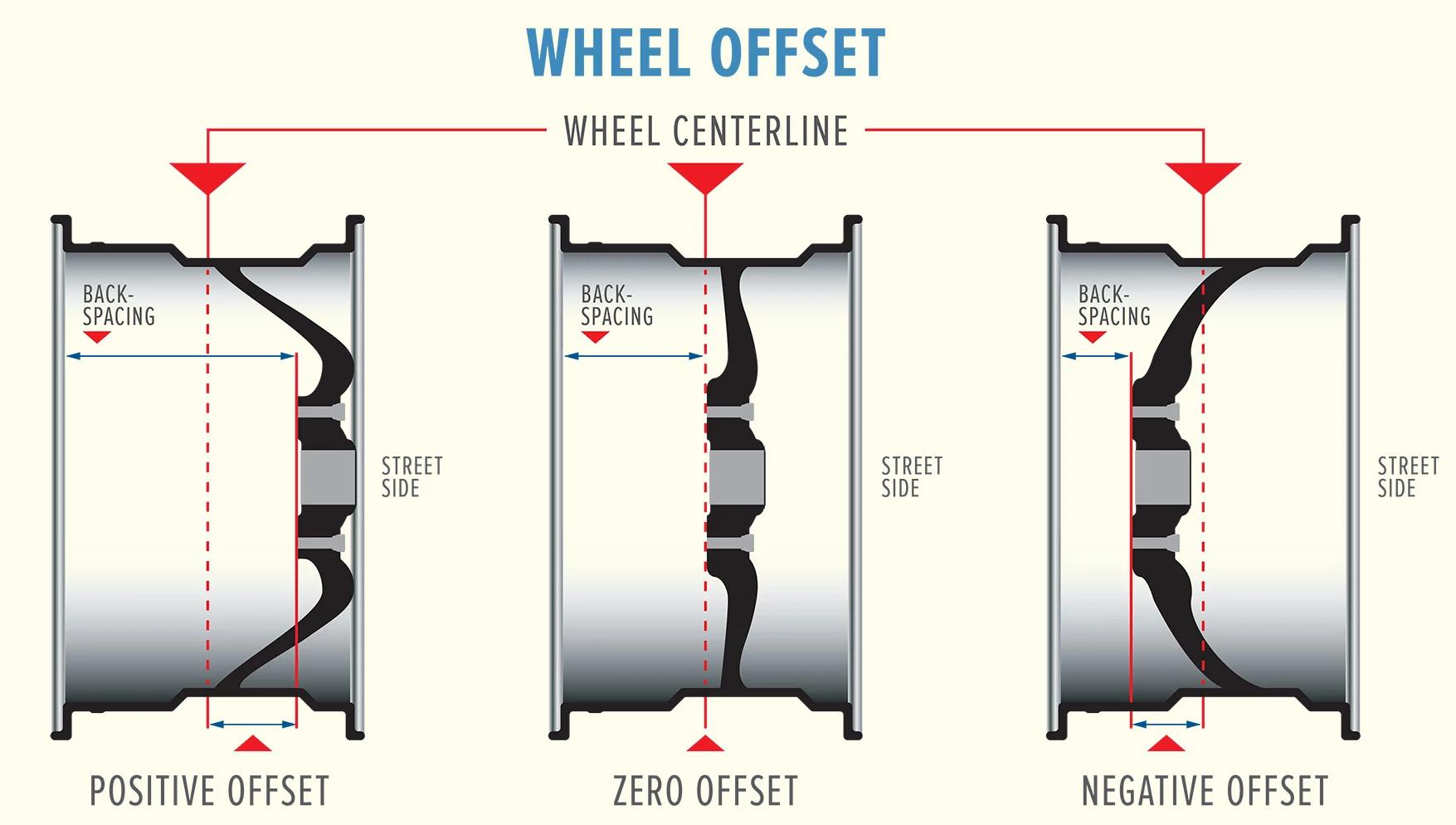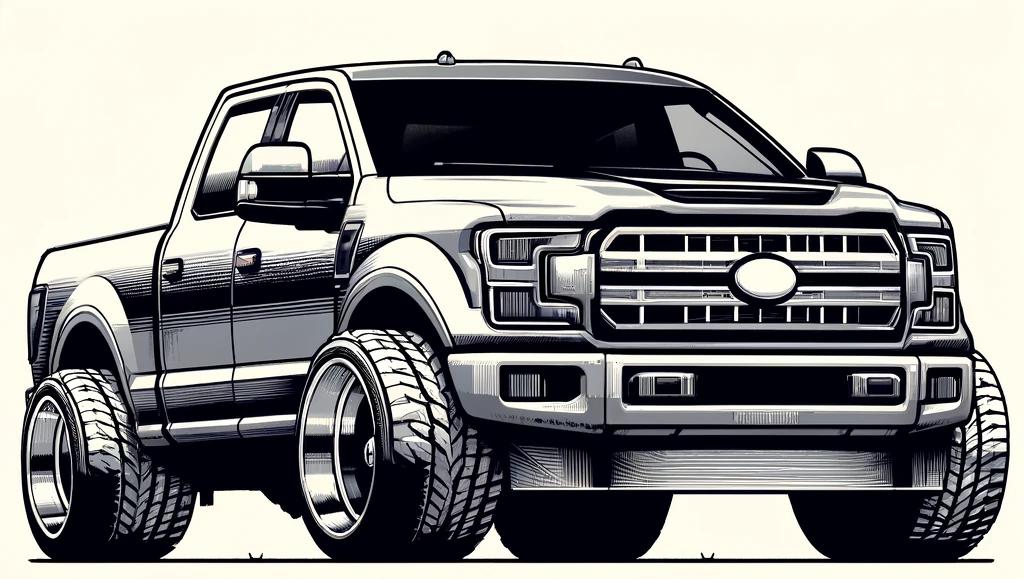Wheel offset is a critical factor in the performance and appearance of a vehicle. It refers to the distance between the centerline of the wheel and the plane of the hub-mounting surface of the wheel. Depending on this distance, wheel offset is categorized into three types: positive, zero, and negative. Each type has its specific applications, advantages, and disadvantages that can significantly affect a vehicle’s handling, stability, and aesthetics.

Positive Offset
In a positive offset wheel, the mounting surface is located toward the front (street side) of the wheel. This is the most common type of offset in modern vehicles, especially front-wheel drives, as it aligns well with the suspension setup, pushing the wheels closer to the outer body.
Advantages
- Improves vehicle stability by aligning the wheels closely with the vehicle body.
- Reduces strain on suspension components, contributing to a longer lifespan.
Disadvantages
- May reduce steering responsiveness due to the wheels being positioned more inward.
- Increased risk of the wheels rubbing against the bodywork, especially with larger aftermarket wheels.
Zero Offset
A zero offset means the wheel’s mounting surface is exactly in line with the centerline of the wheel. This setup is less common and usually seen in older vehicles or specific types of performance cars where the design aims for a balance between the inner and outer wheel placement relative to the body.
Negative Offset
With a negative offset, the wheel’s mounting surface is toward the back (brake side) of the wheel. This configuration pushes the wheel outwards, giving the vehicle a more aggressive stance.
Advantages
- Enhances handling and cornering capability by widening the vehicle’s track.
- Allows for a more aggressive vehicle stance and accommodates larger tires.
Disadvantages
- Increases wear on wheel bearings and suspension components due to greater outward leverage.
- Potential for the wheels to protrude beyond the body, which may require modifications or lead to legal issues in some areas.
Impact on Offroad Vehicle Performance
For off-road vehicles, wheel offset is a pivotal consideration. A negative offset is often favored because it offers a wider stance, crucial for stability over uneven terrain. The broader wheel track can improve balance and grip when navigating through obstacles. However, this setup requires careful consideration of wheel well clearance to prevent the tires from rubbing against the body or suspension components, possibly necessitating modifications for optimal performance. Learn more about how to enhance your vehicle with these off-road modifications.
Understanding wheel offset is paramount for anyone looking to modify their vehicle for performance or aesthetic reasons. Whether opting for a positive, zero, or negative offset, each choice comes with its own set of pros and cons. For off-road enthusiasts, the balance between a vehicle’s appearance and its functional capability over rugged terrain often leans towards a negative offset. However, it’s essential to consider the implications on vehicle dynamics and ensure compatibility with your vehicle’s design and intended use.
At OUTLAW Off-Road and Performance we love what we do and it’s our mission to provide San Antonio truck enthusiasts with the best service at friendly rates. Let us help you find the perfect set of wheels for your vehicle, be it positive offset or negative. Contact us today for your custom off-road wheel and tire installation.
